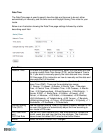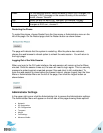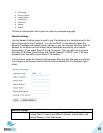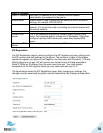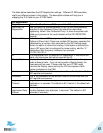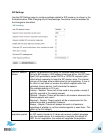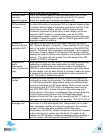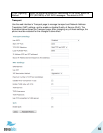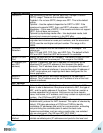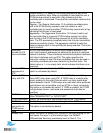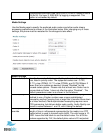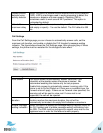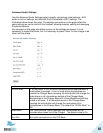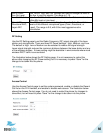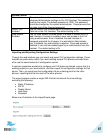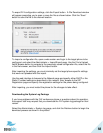
61
Transport Settings
Use SRTP
Use this setting to control Secure Real-time Transport Protocol
(SRTP) usage. These are the available options:
Disabled – Do not use SRTP; always use RTP. This is the default
setting.
Optional – Use the optional disposition for SRTP in SDP. If the
remote end supports SRTP, then use SRTP; otherwise, use RTP.
Mandatory – Force use of SRTP. If the remote end does not support
SRTP, the call does not connect.
Optional by duplicating media offer – Use duplicated media, both
secured and unsecured versions, in the SDP offer.
Start RTP Port
This is the base port number for RTP. The default is 4000. RTP is
originated and received on even port numbers, and the associated
RTCP uses the next higher odd port number. The range is 0 to
65535.
TCP/UDP
Selection
Select the transport that will be enabled for SIP messages. The
options are:
Both TCP and UDP, TCP Only, and UDP Only. The default is Both
TCP and UDP. Note that UDP will be used if it is available.
Local TCP/UDP
Port
Specify the local port for SIP transport. The default is 5060 for UDP
and TCP. (Both use the same port.) The range is 0 to 65535.
IP Address (SIP
and RTP
address)
Optional. If specified, use this IP address (or hostname) as the
advertised SIP and RTP address of this transport (the public
address). The IP address does not have to correspond with one of
the local host network interfaces; it may be the public IP address of
a NAT router where port mappings have been configured for the
phone application.
Bound IP
Address
Optional. Bind the SIP and media transports to the specified IP
address. The IP address must be an IP address of one of the host
network interfaces.
NAT Settings
STUN Server
Optional. Specify the STUN (Session Traversal Utilities for NAT)
server to use to determine if the phone is behind a NAT, the type of
NAT, and the public address of the phone. The field can contain a
comma separated list of servers. Each server can be a domain
name, host name, or IP address, and it may contain an optional port
number. (For STUN see IETF RFC 5389.)
Use ICE
Check this option to use the ICE (Interactive Connectivity
Establishment) protocol for NAT traversal. This option is checked by
default. ICE takes advantage of STUN and TURN to identify
candidates (IP addresses and ports) for communication, evaluating
and prioritizing the candidate pairs to select the best route.
Expensive candidates, such as using a media relay, are selected
only as a last resort. (For ICE see IETF RFC 5245.)
ICE Nomination
Method
When using ICE, select the preferred ICE Nomination Method. To
validate candidate pairs (IP addresses and ports for the local and



